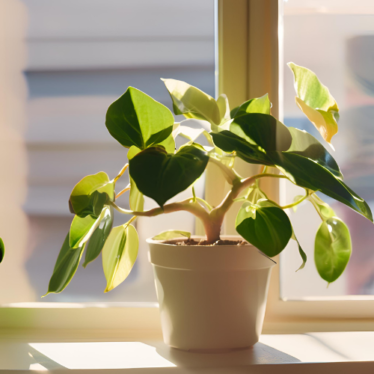
Money plants, also known as Pothos or Devil’s Ivy, are popular houseplants cherished for their attractive, heart-shaped leaves and easy care requirements. Whether you’re a seasoned gardener or a newbie, this guide will help you keep your money plant thriving. Let’s dive into the essential tips and tricks for money plant care.
1. Choosing the Right Location
Money plants thrive in bright, indirect sunlight. Here’s what you need to know about their lighting needs:
- Indirect Sunlight: Place your money plant near a window where it can receive plenty of filtered light. Avoid direct sunlight as it can scorch the leaves.
- Low Light Tolerance: These plants are adaptable and can also survive in low light conditions, making them perfect for offices and shaded corners of your home.

2. Watering Your Money Plant
Proper watering is crucial for the health of your money plant. Follow these guidelines:
- Consistency: Water the plant when the top inch of soil feels dry to the touch. Overwatering can lead to root rot, while underwatering can cause the leaves to wilt.
- Drainage: Ensure your pot has drainage holes to prevent water from accumulating at the bottom. This helps keep the roots healthy.
3. Soil Requirements
Money plants are not very picky about soil but prefer a well-draining potting mix. Here are some tips:
- Potting Mix: Use a standard houseplant potting mix or create your own by mixing equal parts of peat moss, perlite, and vermiculite.
- Repotting: Repot your money plant every 1-2 years to refresh the soil and provide more space for growth.
4. Fertilizing for Healthy Growth
Fertilizing your money plant can boost its growth and keep the leaves vibrant. Here’s how to do it right:
- Balanced Fertilizer: Use a balanced, water-soluble fertilizer once a month during the growing season (spring and summer).
- Dilution: Dilute the fertilizer to half the recommended strength to avoid over-fertilizing, which can damage the plant.
5. Pruning and Training
Pruning helps maintain the shape of your money plant and encourages bushier growth. Here’s what you should do:
- Trimming: Trim back any overgrown or leggy stems using clean, sharp scissors. Cut just above a leaf node to encourage new growth.
- Training: Use trellises, stakes, or let the vines trail from hanging baskets. You can also train them to climb walls or shelves for a decorative touch.
6. Pest Control
Money plants are generally resistant to pests, but occasional problems can arise. Here’s how to deal with common pests:
- Aphids and Mealybugs: Wipe the leaves with a mixture of water and mild soap to remove pests.
- Spider Mites: Increase humidity around the plant by misting the leaves or using a humidifier to deter spider mites.
7. Propagation
Propagating money plants is easy and a great way to expand your collection. Follow these steps:
- Stem Cuttings: Take a cutting with at least 4-5 leaves. Place the cutting in water or soil, making sure at least one node is submerged or buried.
- Root Development: In water, roots will start to form in a few weeks. If planted in soil, keep the soil moist and wait for new growth to indicate successful rooting.
Conclusion
Caring for a money plant is straightforward and rewarding. By providing the right light, water, and occasional fertilizer, your money plant will flourish and add a touch of green to your indoor space. Whether you’re looking to decorate your home or bring a bit of nature into your office, money plants are an excellent choice for any environment. Happy gardening!

